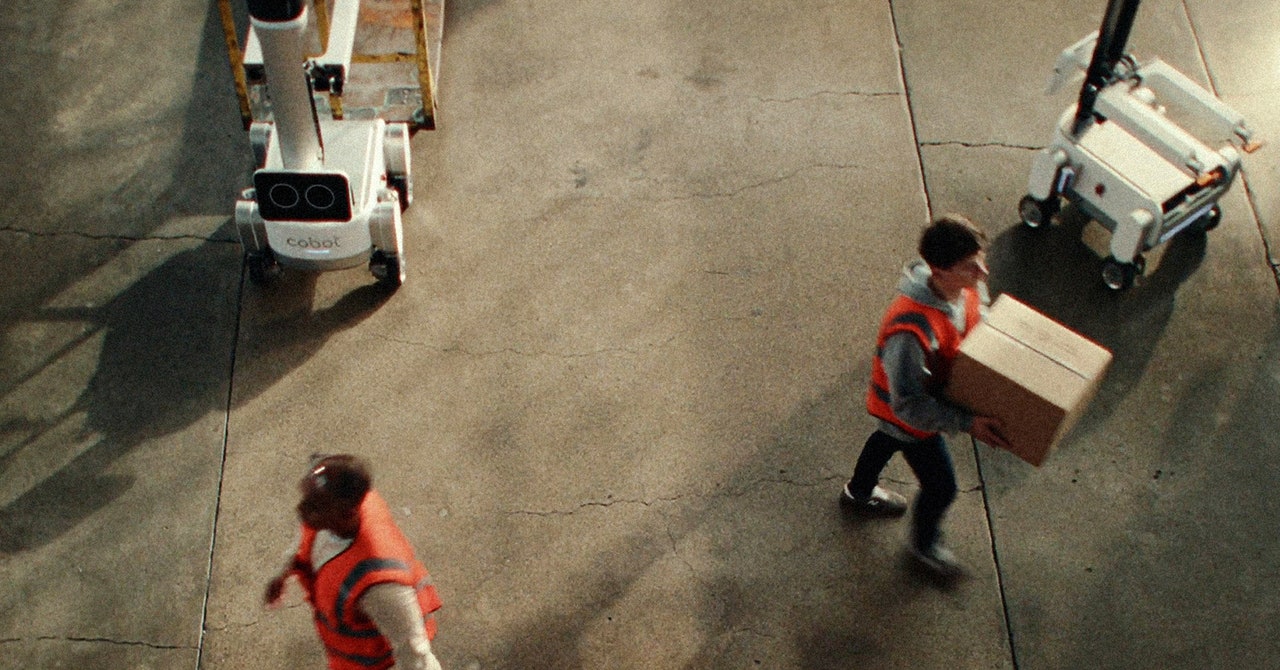About 30 Proxie robots are currently being tested by the shipping company Maersk and the Mayo Clinic. The robots have completed more than 5,000 hours of total work time, moved 16,000 carts and traveled more than 1,000 kilometers. Several other companies, including Moderna, Owens & Minor and Tampa General Hospital, are exploring how they can use proxies.
Unlike other robots, the Proxie’s battery can be replaced to avoid idle charging. Cobot declined to say how much it costs to buy or lease Proxie, but mobile robots often cost tens of thousands of dollars apiece.
Robots work alongside humans, taking turns moving carts and navigating busy spaces without bumping into anyone. Porter says the idea is for robots to level out as AI becomes more capable, allowing for more complex manipulation and communication.
Cobot has a version of Proxie that will respond to voice commands using a large language model to analyze utterances, Porter says. When a worker says “Go to dock 3 and grab the cart next to the door,” the robot will respond accordingly. The company is also tracking the development of algorithms that allow for more sophisticated forms of manipulation.
Proxie may seem remarkably simple at a time when many companies are rushing to develop humanoid robots. But Porter says that although Amazon is working with one startup, Agility Robotics, to test its humanoid robot, the technology is simply too expensive and raw to be widely deployed, he says. Some humanoids on the market cost tens of thousands of dollars, while others cost many hundreds of thousands. But autonomous capabilities vary widely, as does reliability, making them more expensive to deploy.
“At Amazon, we were looking at a lot of humanoids,” says Porter. “There are real problems that need to be solved with something more human-capable, but jumping all the way to a humanoid is super complicated. Artificial intelligence is not there yet.”
Instead, Proxy can replace more and more menial tasks that people often don’t want to do. Erez Agmony, general partner at Interwoven Ventures, which was involved in delivering the Cobot pilot to Maersk, says it’s very promising and has the potential to be scaled up.
“The main reason is their ability to use collaborative robots to support teams without massive modifications to the warehouse or current equipment,” he says. “The team hated pushing the carts, which are very heavy, and welcomed the robots that do it.”
Fadi Saad, founder of Cybernetix, a Boston-based venture capital firm specializing in robotics, says Cobot is looking for a big new category of work involving moving goods on carts that can be tackled using the latest advances in robotics. He adds that it’s important that Proxie evolves into something more capable.
“Porter is trying to build a platform that can turn into a humanoid along the way,” Saad says. “I think that’s the right approach.”
Porter isn’t the only robotics luminary pursuing something simpler than humanoids. Rodney Brooks, a pioneering researcher and co-founder of iRobot, is now the chief technology officer of Robust.AI, a company that creates collaborative mobile robots capable of assisting human pickers in factories and warehouses.
“There is a real need for factories and warehouses to move things, but to think that humanoids are going to do it anytime soon is just crazy,” says Brooks. “Wheels were invented for a good reason.”
What common tasks would you like a robot to help you with? Would it matter to you if the robot was humanoid or not? Email me at [email protected] to let me know.




